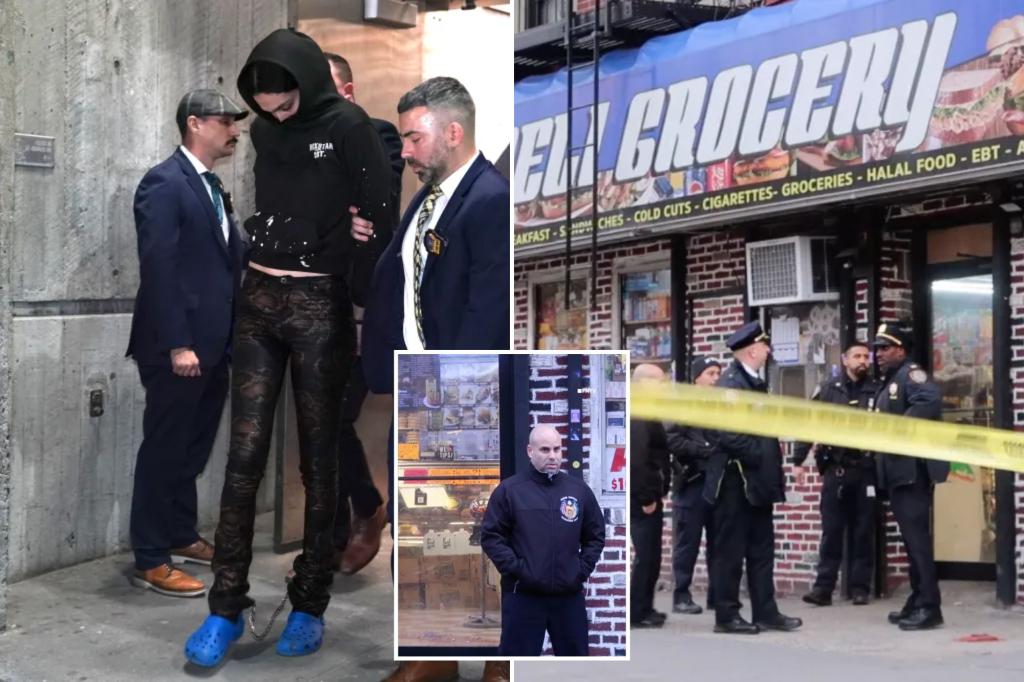The Unfolding Narrative of Violence: A Deep Dive into the Case of Jaia Cruz
The fatal stabbing of a postal worker in a Harlem deli has sent shockwaves through the community, casting a spotlight on the alleged perpetrator, Jaia Cruz, and her troubling history of violent behavior. While the immediate circumstances surrounding the tragic incident are still under investigation, emerging details paint a disturbing picture of escalating aggression and a pattern of knife-related offenses. This comprehensive examination delves into the available information, piecing together the fragments of Cruz’s past to understand the trajectory that may have led to this devastating outcome.
The incident at the Harlem deli, where a seemingly trivial dispute over a place in line escalated into a fatal stabbing, has left many grappling with the senselessness of the violence. The victim, a postal worker simply going about their day, became the unfortunate target of Cruz’s alleged rage. While the specific trigger for this particular act remains unclear, the incident has brought to light Cruz’s previous encounters with law enforcement, revealing a pattern of threatening behavior and a propensity for wielding knives. These prior incidents provide crucial context for understanding the current tragedy and underscore the urgent need for addressing the underlying issues that contribute to such violent outbursts.
Cruz’s history of knife-related incidents, as revealed by law enforcement sources, dates back several years. One particularly alarming incident occurred in Midtown West in July 2020. Cruz was observed brandishing an open box cutter and threatening another individual with the chilling words, "I’m going to cut him." The aggressive display, coupled with Cruz’s refusal to comply with police orders, resulted in an arrest for resisting arrest. This incident foreshadowed the potential for escalating violence and highlights the importance of early intervention and appropriate support systems for individuals exhibiting such dangerous behaviors.
The 2020 incident also raises questions about the effectiveness of the interventions Cruz may have received following previous arrests. While the specific details of these prior encounters remain somewhat obscured, the recurrence of violent behavior suggests that the underlying issues were not adequately addressed. This raises concerns about the availability and accessibility of mental health services, anger management programs, and other resources that could have potentially diverted Cruz from a path of escalating violence. A thorough examination of the support systems available to individuals with a history of violent behavior is crucial for preventing future tragedies.
Beyond the specific incidents involving knife violence, Cruz’s past reveals a complex individual struggling with issues of identity and self-perception. The fact that Cruz was initially identified by a different name in the 2020 arrest raises questions about potential gender identity issues and the challenges Cruz may have faced in navigating societal expectations and personal struggles. While these aspects of Cruz’s identity do not excuse the violent behavior, they provide a more nuanced understanding of the individual and the potential contributing factors that may have played a role in the tragic events that unfolded.
The case of Jaia Cruz serves as a stark reminder of the complex interplay of individual circumstances, societal pressures, and the availability of support systems in shaping the trajectory of individuals struggling with violent tendencies. While the legal process will determine the appropriate consequences for the alleged crime, the broader societal challenge lies in addressing the root causes of violence and providing effective interventions that can prevent future tragedies. This requires a multifaceted approach that includes access to mental health services, anger management programs, and community-based support networks that can help individuals navigate personal challenges and develop healthy coping mechanisms. By addressing these underlying issues, we can strive towards creating a safer and more compassionate society for all.

